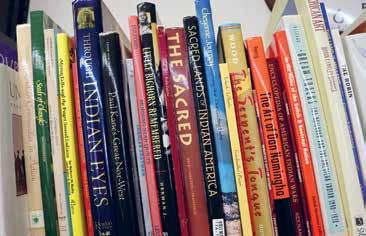
4 minute read
GIVING NEWS
A MODEL FOR REGIONAL RESILIENCE
An economic engine and a center for sustainable innovation, the University of Minnesota Morris is finding local solutions to global challenges. A public land-grant institution grounded in its sense of place, the campus is a regional center for education, culture, and research. Through our A model for living and learning campaign, we are optimizing private giving to make greater Minnesota a more sustainable, resilient place—thanks to our donors and friends.
EDUCATION: THE ECOCENTER AT THE ECOSTATION

The EcoStation on a beautiful summer day
Thanks to donors’ vision and generosity, we are creating an environment where students play a pivotal role in solving the problems facing our world. That environment, the EcoStation, is a resource for the campus community and a research platform for the benefit of all. Its EcoCenter facility will affirm the vision for the EcoStation as a premier learning laboratory. Drawing power and beauty from the woods in which it sits, the EcoCenter will empower the people of Minnesota to preserve the prairie environment. And it was made possible by donor generosity.
Donors like Chancellor Emerita Jacqueline R. Johnson, who joined the founding donors in making their bold vision real. Donors like the Helen Briggs family, stewards of our first chief administrator’s legacy. And Jessica Trites Rolle ’95, a loyal alumna with an eye on sustainability.

Johnson with the Torgerson family at the dedication of the EcoStation in 2015
—Jacqueline R. Johnson
—Briggs Family
—Trites Rolle ’95
CULTURE: EDWARD J. AND HELEN JANE MORRISON PERFORMING ARTS CENTER

The renovation of Edson Auditorium has improved the presentation of events for both student groups, like the United Students for Africa(International Fashion Show), shown here, and big-name performers, like Performing Arts Series act David L. Harris. Audiences and performers alike enjoy an improved experience, thanks to donors like the Otto Bremer Trust.
Performing arts are alive and well in west central Minnesota, thanks to an investment from the Otto Bremer Trust (OBT) for the renovation of Edson Auditorium in the Edward J. and Helen Jane Morrison Performing Arts Center. Since 1992 the Student Center has been the campus community center. And at its heart is Edson Auditorium, a 500-seat auditorium crucial to the success of community events. OBT’s investment builds on its previous investments in the campus—and those of other donors and friends—to complete a yearlong transformation of this premier performance space.
—Daniel Reardon, co-CEO and trustee, Otto Bremer Trust

The renovation of Edson Auditorium has improved the presentation of events for both student groups, like the United Students for Africa(International Fashion Show), and big-name performers, like PerformingArts Series act David L. Harris, shown here. Audiences andperformers alike enjoy an improved experience, thanks to donors like theOtto Bremer Trust.
RESEARCH: RODNEY A. BRIGGS LIBRARY
The Morris campus is situated on original Anishinaabe (Ojibwe) and Dakota and Lakota (Sioux) homelands, and its first buildings housed an American Indian Boarding School. Sharing stories of the people who lived and learned on these grounds is vital to moving forward in a good way. Now the campus library’s ability to do so is stronger, thanks to Paulette Fairbanks Molin ’66. A member of the Minnesota Chippewa Tribe from the White Earth Reservation and UMN Morris’s first Native American graduate, Molin has made an invaluable gift of books and other materials that enhance Briggs’ collection and preserve indigenous stories for us all.

Molin's gift of books and other materials enhances Briggs' collection and preserves indigenous stories for us all.
—Paulette Fairbanks Molin ’66
THE CHALLENGE AHEAD
The University of Minnesota is driven by belief in a better tomorrow. That means finding local solutions to issues facing rural areas: limited transportation, shifting demographics, a changing agriculture industry, and more. Because of our location and community partnerships, we are uniquely situated to reimagine the future of rural America. We are going to do that with our forthcoming Morris Challenge.
A competition open to all—students, faculty, and other thought leaders—the Morris Challenge will uncover practical and affordable solutions to the grand challenges facing rural places. Teams will demonstrate practical, effective, actionable solutions to real-world issues.
—Chancellor Michelle Behr
To learn more, contact Director of Advancement Susan Schmidgall today: sschmidg@morris.umn.edu or 320-589-6160






